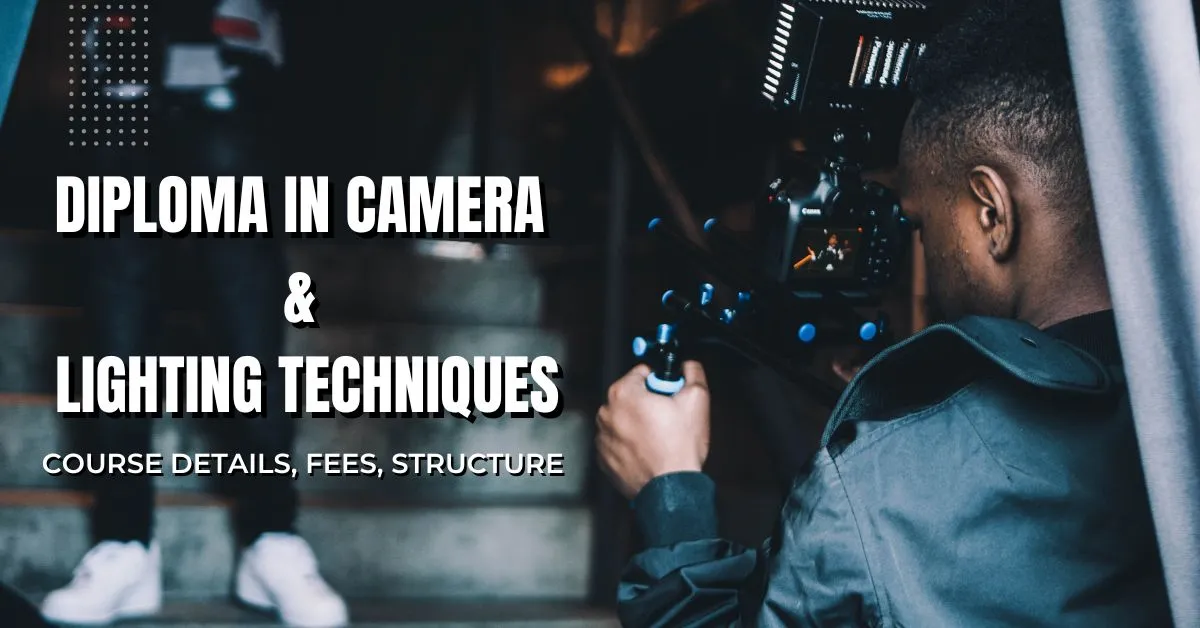


26, April 2023
The Diploma in Camera & Lighting Techniques is a comprehensive program that trains students in the technical and creative aspects of cinematography. This diploma course is ideal for those who aspire to be camera operators, directors of photography, or lighting technicians in the film and television industry. In this article, we will explore the course details, fees, and structure of the Diploma in Camera & Lighting Techniques.
The duration of the Diploma in Camera & Lighting Techniques varies from institute to institute, but it typically takes one year to complete. The course curriculum includes both theoretical and practical training in camera operation, lighting techniques, and cinematography. Students will learn about camera equipment, lighting setups, shot composition, lens selection, and color correction. They will also gain hands-on experience in studio and location shoots.
The fees for the Diploma in Camera & Lighting Techniques also vary based on the institute and location. On average, the fees range from INR 1, 00,000 to INR 2, 50,000 for the entire course. Some institutes also offer scholarships and financial aid for eligible students.
The Diploma in Camera & Lighting Techniques is a structured course that follows a syllabus that covers a wide range of topics related to cinematography. Here's a sample course structure for the Diploma in Camera & Lighting Techniques:
The course may also include guest lectures from industry professionals and opportunities for internships and practical training.
Semester-wise course structure for the Diploma in Camera & Lighting Techniques:
Semester 1:
Semester 2:
Semester 3:
Semester 4:
Career option and Job Profile after Diploma in Camera & Lighting Techniques
After completing a Diploma in Camera & Lighting Techniques, graduates can pursue various career paths in the film and television industry. Here are some popular job profiles for diploma holders:
Camera Operator: Camera operators are responsible for capturing high-quality footage using professional cameras and equipment. They work closely with directors and cinematographers to ensure that the camera angles, shots, and movements are in line with the creative vision of the project.
Director of Photography (DOP): DOPs are responsible for the overall look and feel of a film or TV show. They work closely with the director to create the visual style and tone of the project. They are also responsible for choosing the right camera, lenses, and lighting setups to achieve the desired look.
Lighting Technician: Lighting technicians are responsible for setting up and controlling the lighting on a film or TV set. They work closely with the DOP to achieve the desired lighting effects and ensure that the actors and sets are properly lit.
Cinematographer: Cinematographers are responsible for capturing high-quality footage that tells the story of the film or TV show. They work closely with the director and DOP to create the visual language of the project and ensure that the camera angles, shots, and movements are in line with the creative vision.
Film and Video Editor: Film and video editors are responsible for assembling raw footage into a cohesive and engaging story. They work closely with the director, DOP, and sound designer to create the final product.
Colorist: Colorists are responsible for color grading and correction of footage. They work closely with the DOP to ensure that the colors and tones of the project are consistent and visually appealing.
The Diploma in Camera & Lighting Techniques is an excellent program for students who want to pursue a career in cinematography. It provides students with the technical and creative skills necessary to work in the film and television industry as camera operators, directors of photography, and lighting technicians. With the right training and experience, graduates of this program can find opportunities in various production houses, advertising agencies, and media organizations.